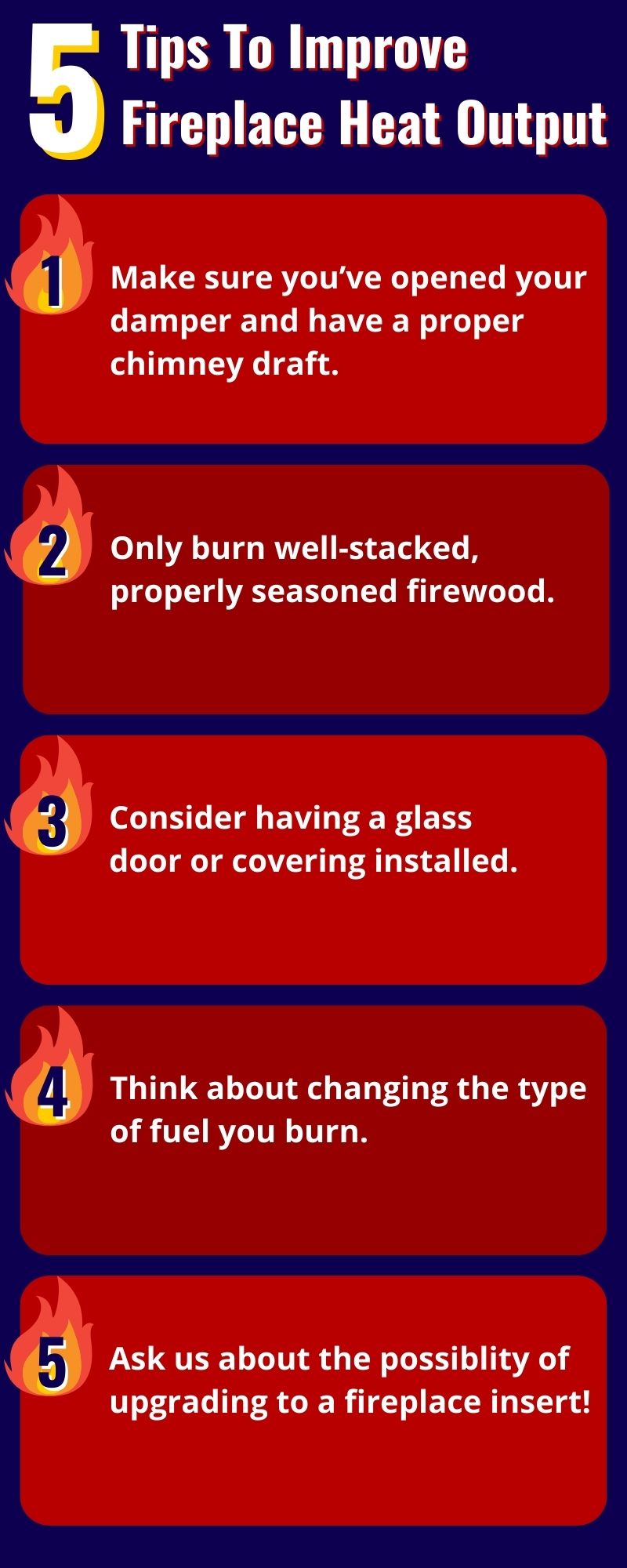Is Your Fireplace Not Giving Enough Heat?
After the holidays and the excitement of a new year settles down, the rest of the winter can feel a bit like a marathon…even here in Houston! However, the chillier weather is good for one thing: unwinding in front of the fireplace with a hot beverage in hand. …but what happens when your fireplace no longer warms the room like it used to? Is it now relegated to be but a decorative relic forever – beautiful and eye-catching, but functionally useless?
Fortunately, this is not the case. In fact, there are quite a few ways to bring back the heat you’ve been missing.
Read on to learn more about how you can boost your fireplace’s efficiency and heat production? Have specific questions that can’t wait? Lords Chimney is here to help. Reach us online by filling out this appointment request form, or give us a call at 855-504-0005.
What Are the Most Common Reasons a Fireplace Isn’t Giving Enough Heat?
That’s a great question – and a pretty crucial one to determine your best approach moving forward. In general, fireplaces and chimney systems can be relatively finicky, and because so much of how and why they operate happens out of sight, it can be tough to determine the cause of a heat production issue. For example, the problem might be in the quality of fuel you’re using, or it could be something with your appliance/structure itself.
That being said, here are some of the most common reasons why a fireplace is not heating well:
- There could be a significant buildup of creosote or other debris creating a blockage that makes it much harder for the combustion fumes to escape
- You might be using unseasoned wood or other materials not intended to be burned in a fireplace
- Your damper might be faulty and is inhibiting proper airflow
- The logs could have been stacked incorrectly
- Your flue liner might have tears or holes
And while these might be some of the more common reasons your fireplace is not performing the way you’d like or how it once did, they are not the only. It’s important to get in touch with a professional to come and troubleshoot your issues as soon as you notice them. Operating an appliance that is behaving strangely or differently than normal could leave you at risk for numerous dangers, like carbon monoxide exposure or chimney fires.
What Are Some Simple Ways To Improve My Fireplace’s Efficiency?
Ah, yes…the fun part! Just because your fireplace might not be heating the way you’d like right now does not mean you have to bid it farewell. Quite the opposite, actually! An inefficient fireplace might be a nuisance at first, but it can also be a great excuse to re-think your space and what you’re looking to get out of your hearth. While there are some simple things you can try, if all else fails, think of this irritation as a new opportunity to increase the heat and the vibes in your living space.
Here are some tips that you can try to increase your fireplace’s heat output:
- Ensure your damper is open and you have adequate airflow. With the pace at which life moves these days, in some ways it’s a wonder that more people don’t forget to check their damper before lighting a fire. This piece of your system is vital in ensuring that the airflow is balanced between the outdoors and the inside of your home.
- Only burn properly seasoned wood…and make sure it is stacked properly too. Did you know both the “what” and the “how” of the wood you burn matters a great deal in the quality, efficiency, and overall performance of combustion? Not only do you need to make sure you’re only ever using adequately dried (seasoned) timber, but you also should take care to stack your logs from biggest at the bottom to the smallest at the top, so the fire burns accordingly.
- Have a glass covering or doors installed. A double-whammy! Adding a glass piece to the front of your fireplace (usually available as doors) is an excellent way to both increase the heat production and radiant warmth, while adding a stunning look to the room too.
- Switch up your fuel type. If you’re currently using wood as a fuel source, perhaps it’s time to consider converting to gas. While it’ll never be able to replace wood in terms of overall ambience, gas is known to be more efficient in heat production. Plus, it’s a lot easier to operate and maintain.
- Upgrade to an insert. Along similar lines, if you’re interested in really changing things up, while still keeping most of the integrity from your original design, you could look into upgrading to an insert. Available in a handful of different fuel types, inserts are one of the best ways to breathe new life into a tired, old, and drafty fireplace.

For Excellent Hearth Care in the Greater Houston Area, Trust Lords Chimney
While the tips above certainly give you some things to try and a lot to think about when it comes to an inefficient fireplace, nothing replaces a professional eye’s once-over. The single most important thing you can do for your fireplace system is to stay on top of those preventative maintenance services like chimney sweepings and inspections. When performed on a regular, annual basis, these tasks can help keep you informed, as well as troubleshoot any potential problematic areas before they become an issue.
To learn more about how to make your Houston home’s fireplace heat better – or for anything else hearth-related – schedule an appointment with Lords Chimney. We’re here to make your home as castle-like as possible. Reach us through our website, or by calling 855-504-0005 – we can’t wait to serve you.

